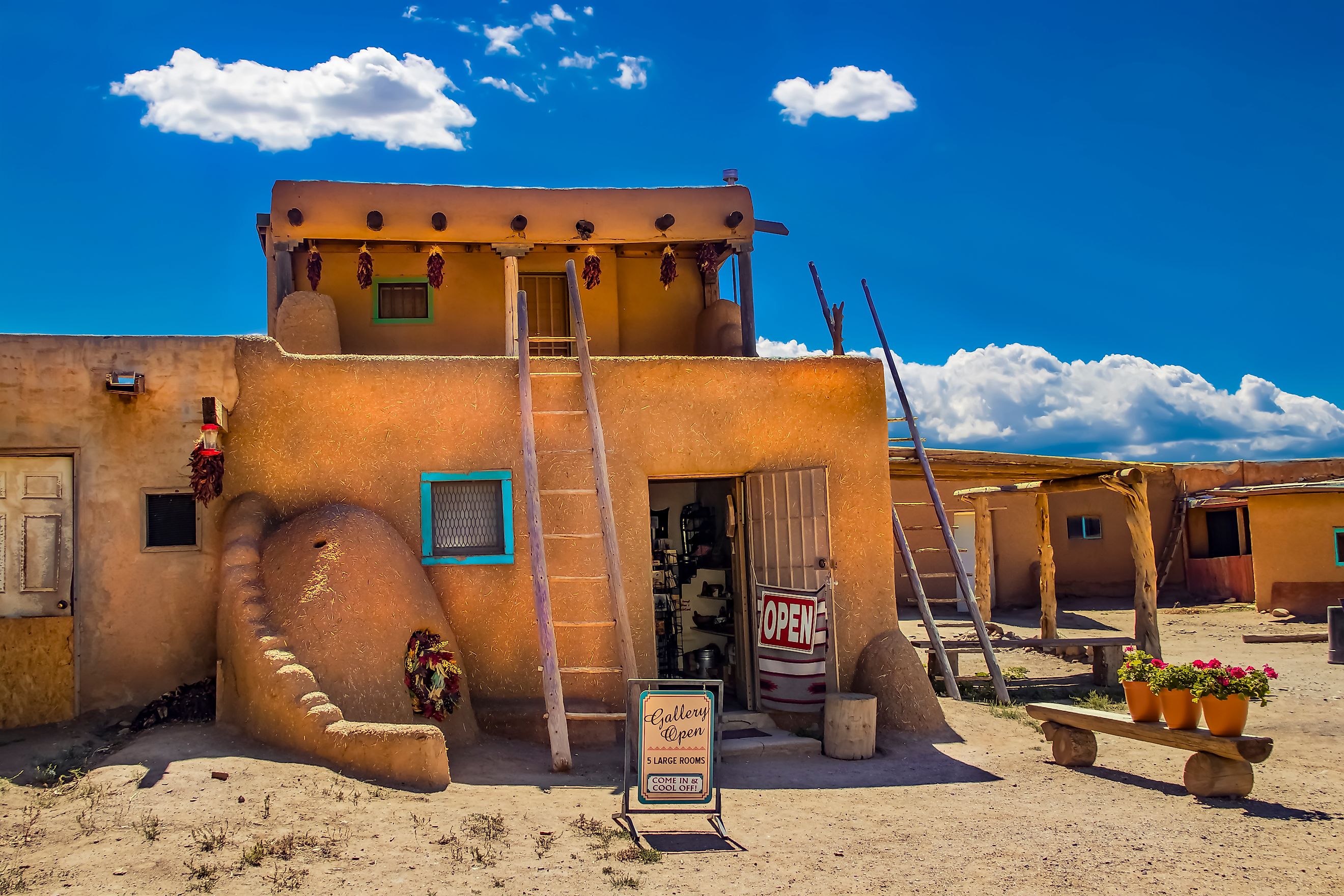
7 Towns In New Mexico That Were Frozen In Time
Entering New Mexico, visitors can feel the echoes of roaring dinosaurs, wandering Apache tribes, and Spanish missionaries reverberating through the land. Many of the state’s towns were once bustling hubs, home to miners and construction workers, but have since largely emptied, leaving behind ghost towns, quiet communities, and humble towns made of adobe. Those looking to jump into the past are in for a treat. If you are ready to stroll down pueblo-style streets, admire Mesozoic dinosaur fossils, or enjoy a beer in a historic tavern and cantina, these seven towns are for you.
Mesilla
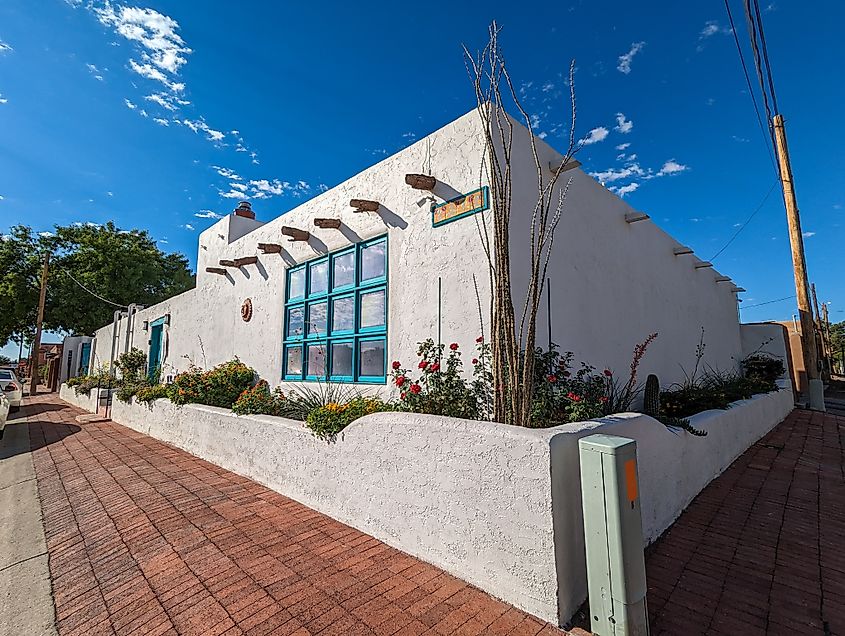
Downtown Mesilla, New Mexico, USA.
Mesilla’s history stretches back centuries, with records of nomadic Indigenous groups inhabiting the Mesilla Valley as early as the 1500s, and the Apache tribe later journeying through and camping in the region. Today, in the heart of Mesilla, visitors can explore a district of thick-walled adobe buildings, now home to museums, art galleries, gift shops, and restaurants. serving authentic Mexican cuisine and offering a cozy outdoor patio where guests can enjoy their meals.
The San Albino Church, located on Mesilla’s central plaza, is one of the oldest churches in the valley, dating back to 1851. To explore Native American and Civil War artifacts from the area, visitors can also stop by the Gadsden Museum, which is located near the church.
Taos
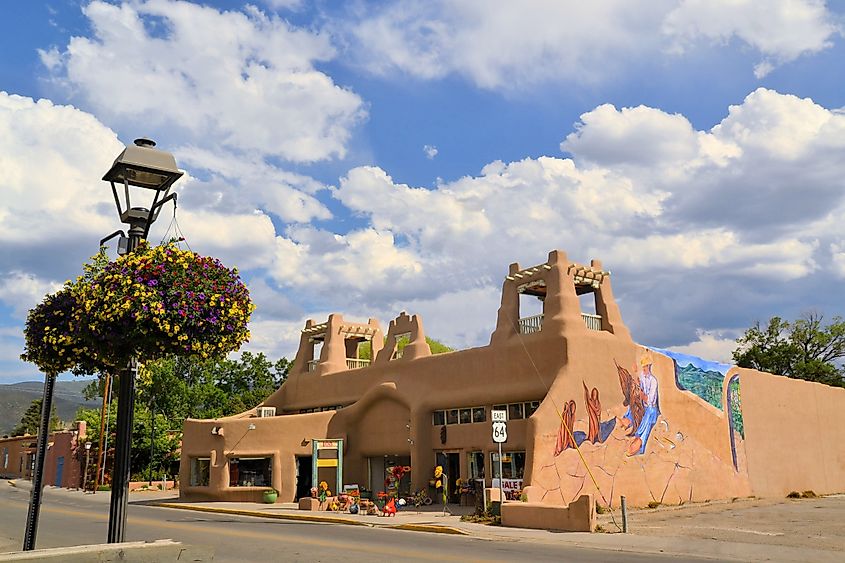
Taos Pueblo ancient Indian indegineous adobe city in New Mexico.
With a history dating back over 1000 years, Taos's Pueblo district is the only living Indigenous community recognized as both a National Historic Landmark and a UNESCO World Heritage site. The district features multi-story adobe buildings, built between 1000 and 1450 C.E., their appearance largely unchanged since Spanish colonizers arrived in the 16th century.
Other historic attractions in Taos include the Couse-Sharp Historic Site, which features the early 20th-century studios and residences of local artists E.I. Couse and J.H. Sharp, along with an 1830s chapel, art galleries, and a 1930s machine shop. Visitors can explore Governor Bent's House and Museum, the former residence of New Mexico’s first American governor, who was also an early trader and trapper.
Aztec
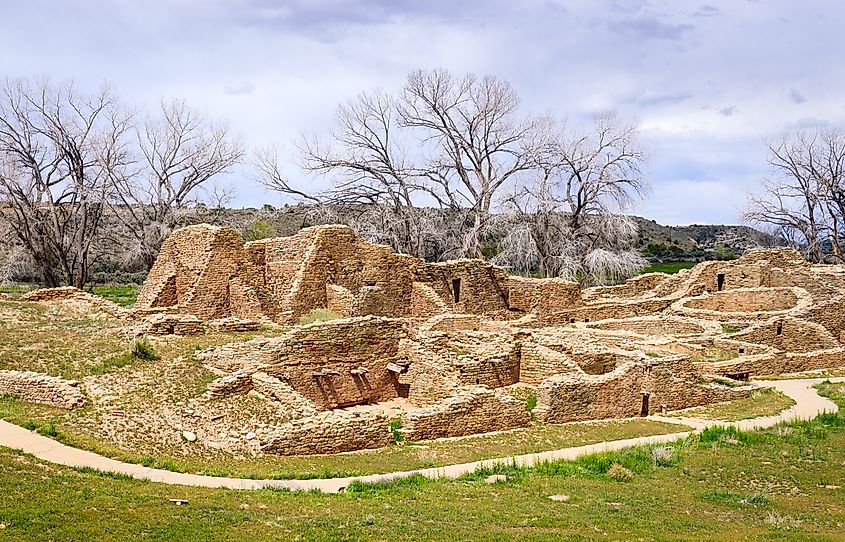
Aztec Ruins National Monument.
Unlike many other New Mexican villages and towns, historic records of Aztec do not begin until 1776. During the 1800s, settlers began arriving in the area to establish a trading post. To learn more about Aztec’s pioneer past, travelers must visit the Aztec Museum and Pioneer Village, which features replicas of businesses, homes, and public buildings from the 19th century, including a doctor’s office, sheriff’s quarters, general store, and post office, as well as a museum with original artifacts from the period.
The Aztec Ruins National Monument is another historic highlight, where visitors can wander through ancient passageways, a 900-year-old Pueblo Great House, and even spot fingerprints left by the original builders in the mortar. San Juan County is home to over 400 natural arches, offering visitors the opportunity to explore and discover these stunning landmarks throughout the area.
Madrid
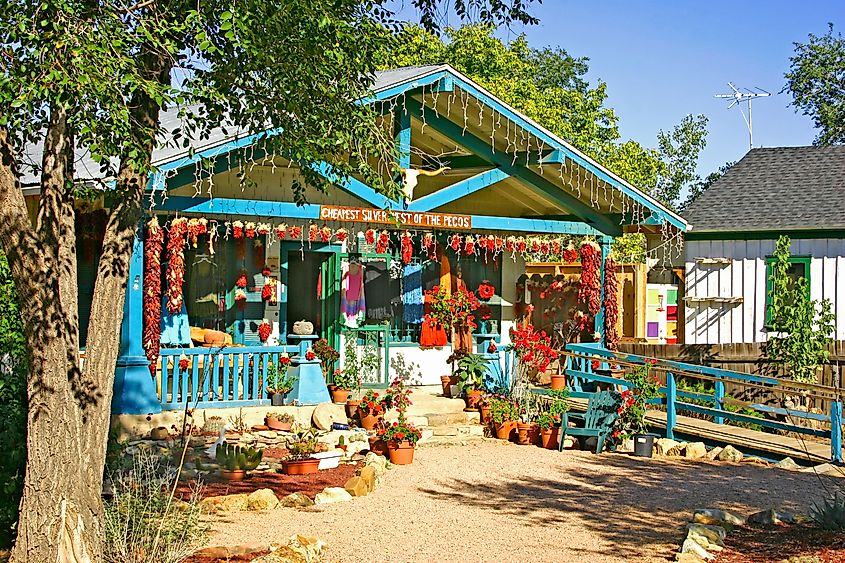
Quaint Roadside Shop in Madrid NM.
In the 19th century, Madrid, New Mexico, flourished as a bustling mining town, but over time, its population dwindled. Today, it is primarily home to artists, vendors, and restaurant owners who work to keep the town’s spirit alive. Visitors can stroll through Madrid’s national historic district, home to many original 19th-century buildings, including a Roman Catholic church, miners’ residences, and a former boarding house. For a souvenir, Ghost Town Trading, 10 PM Steampunk, and Cowgirl Red offer a nice variety of jewelry, pottery, and clothes.
To enjoy some New Mexico Roadhouse cuisine, visitors can grab a bite and drink at Mine Shaft Tavern, a historic tavern that has an outdoor seating patio offering panoramic views of Madrid.
Truth or Consequences
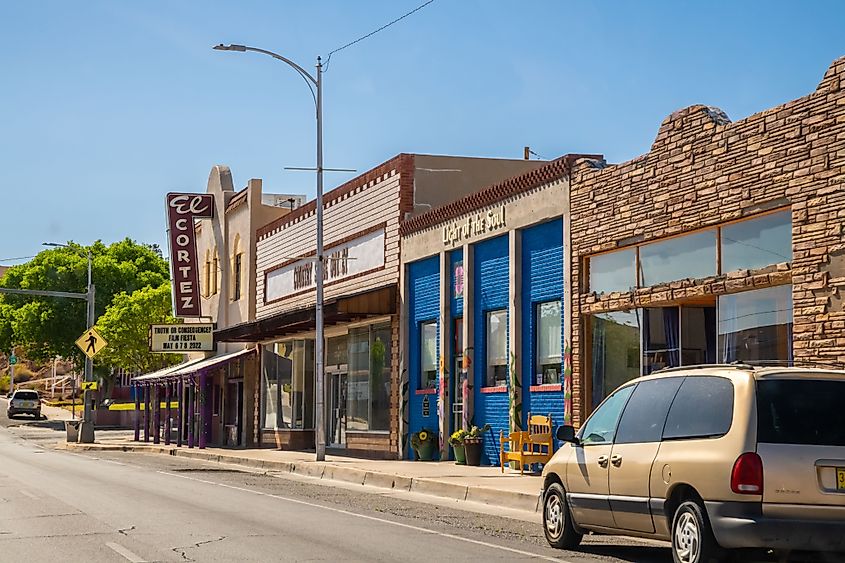
Major settlements in Truth or Consequences did not begin until the early 20th century when workers arrived to the town for the construction of the Elephant Butt Dam. Southeast of the dam, the Elephant Butte District offers a glimpse into early 20th-century life, with authentic buildings from as early as 1907 that stand as lasting reminders of the town's history. Truth or Consequences is also extremely popular for its geothermal mineral waters, with Blackstone Hot Springs and Riverbend Hot Springs both offering relaxing thermal waters for those wanting to unwind.
A short drive from town leads visitors to nearby ghost towns, such as Monticello, founded by farmers and ranchers in 1856, and Engle, established in 1879 as a railroad and water stop for merchants and miners.
Chimayó
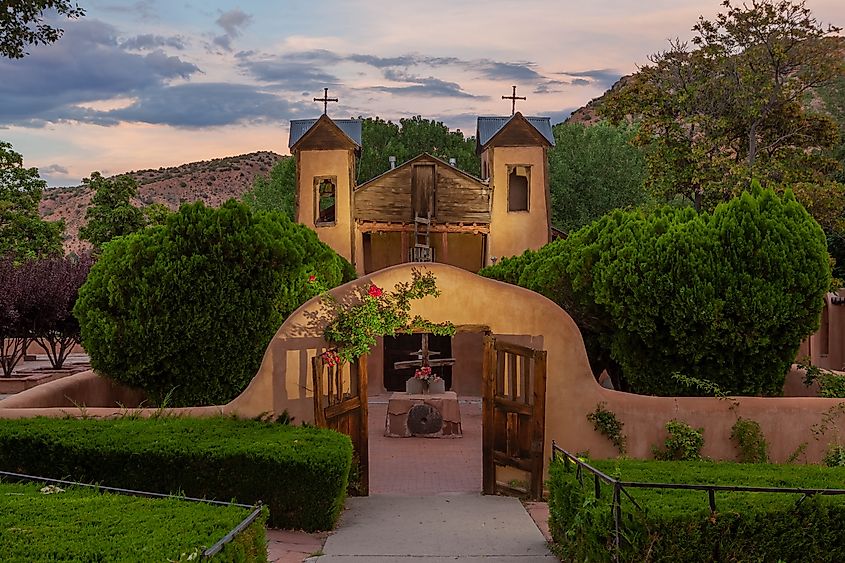
Historic El Santuario de Chimayo in Chimayo, New Mexico at sunset.
Sitting at just a 40-minute drive from Santa Fe, Chimayó makes a great day trip, with history dating back to the 19th century. El Santuario de Chimayó is one of the town’s most notable landmarks, listed as a National Historic Landmark and featuring an old, adobe chapel with two bell towers on both sides of the structure. Roughly 300,000 travelers every year visit the sanctuary, believing it to have blessing and healing powers.
Also in town, Rancho de Chimayo offers traditional New Mexican cuisine, using recipes passed down through generations. Many weavers and artisans reside in Chimayó as well, with Centinela Traditional Arts being a great gallery for visitors to buy traditional souvenirs, such as rugs, pillows, and shawls.
Tucumcari
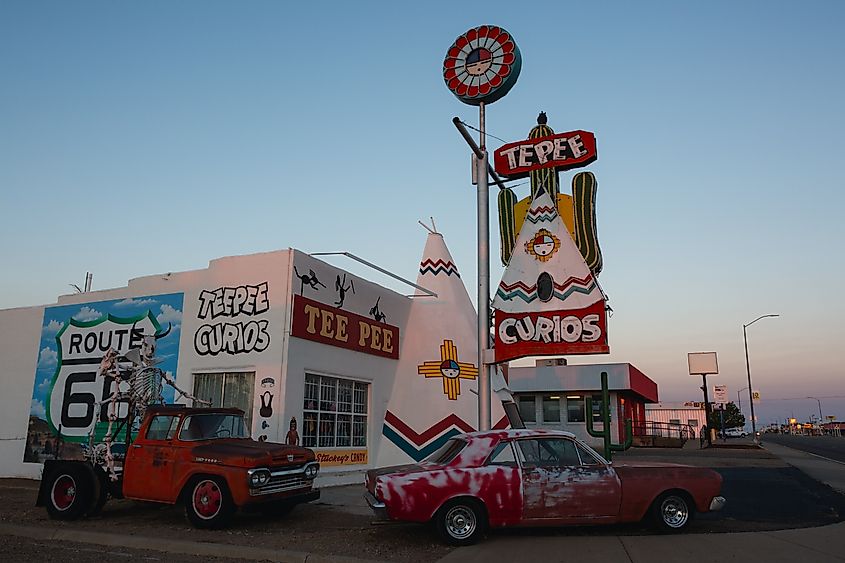
Tucumcari, New Mexico: Twilight at Tee Pee Curios gift shop on Route 66. Editorial credit: Logan Bush / Shutterstock.com
Tucumcari’s history stretches all the way back to the dinosaur age, with fossils from the Triassic, Jurassic, and Cretaceous periods found in the area. Those wanting to see these fossils firsthand must visit the Mesalands Community College’s Dinosaur Museum, which features original fossils and replicas, including footprint casts from the 40-foot-long Torvosaurus, a relative of the Tyrannosaurus rex.
The Tucumcari Historical Museum showcases the town’s early settler, cowboy, and railroad history through various exhibits, including one dedicated to Route 66. Wandering through the town by day, visitors will spot a number of colorful murals, such as the Ranch Scene, Southern Pacific Union Pacific Rock Island, and Tucumcari Lumber Co. murals. By night, the city becomes illuminated by neon signs, allowing visitors to reminisce about its Route 66 past.
Final Thoughts
Although larger cities in New Mexico, such as Albuquerque and Santa Fe are frequented by tourists for their history, some of the state’s most intriguing past lies only in its smallest towns. Those who venture off the beaten path will encounter welcoming artisans, family-owned restaurants, and historic museums. Ready to uncover this side of New Mexico? Plan your next adventure to one of these towns!











